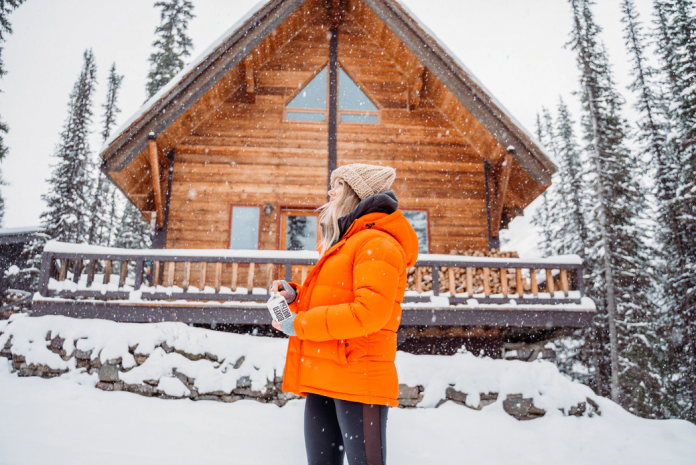Table of Contents
Is your home ready for everything that comes with the cold months? If you’re hesitating to give an answer, the answer is most likely “no.” But, don’t worry, this guide takes you through every step you need to take in order to ensure your home is properly winterized. Keep reading below to find out more to keep you home ready for winter!
Homes need homeowners to care for and prepare them for every season. Homes simply deteriorate quickly if they aren’t getting attention.
Here’s the deal: winterizing your home while the bad weather has already settled in can be really horrible, time-consuming, and, well, pretty cold for you. So, fall is the right season to start getting your property ready for the freezing temperatures, humidity, lots of snow, and shorter daytime.
Proper home winterization means a lot of work needs to be done, from conducting a systematic review of your house’s HVAC equipment to making sure you insulate everything, prepare your home for potential hazards, and even winterize the outdoor of your home.
If you want to enjoy the snow in cozy comfort inside your home, you need to take care of all these elements before the winter months arrive.
Image source: https://unsplash.com/photos/gseALihVvQA
Check your home’s heating system.
The first thing you need to do to prepare your home for winter is to check the most critical element for a property in the cold months: its heating system.
Think about it: having your heating system break down in the middle of the cold season, leaving you with no way of heating your home, can be a real ordeal.
Here’s the deal with heating systems: most heating and air systems are designed to last from 12 to 15 years. Yet, there are systems that stop working at 10 years, and there are systems that are still performing perfectly at 20 years. What makes the difference? How the systems are maintained.
So, before the cold weather settles in, make sure that you test the system, change the air filters, check the fuel supply, check and clean the heating vents, and, most importantly, check for carbon monoxide leaks. It’s always a good idea to have your heating system inspected and maintained by a professional HVAC contractor. Better yet, if you find any problem, it is best to use boiler rental services for the winter to come instead of using a system that doesn’t work properly. It’s safer for you and your family to use this temporary solution than to use a faulty heating system.
Get a carbon monoxide alarm.
Speaking of safety, another crucial step to take when winterizing your home is to protect you and your family from the silent killer called carbon monoxide.
All jokes aside, a carbon monoxide leak is a hazardous thing and can really lead to the death of your loved ones if you fail to prepare for such a situation. So, besides inspecting the heating system for carbon monoxide leaks, you should also invest in a carbon monoxide alarm.
Leaks can happen at all times due to a technical or maintenance problem. So, even if you didn’t find a leak at the time of the full inspection of your heating system, one may still happen during the winter months as you’re using it to heat your home. A carbon monoxide detector is the best way to monitor the CO levels and get alerted with noise and light when these levels get too high and become a threat.
Inspect the fireplace, chimney, and flue
You never think about maintaining, cleaning, or checking the fireplace and the chimney when the weather is warm outside simply because you never use these parts of your home. But, as the weather starts getting colder, you need to make sure that your wood-burning fireplace and chimney aren’t major sources of cold air leaks or other safety hazards during the wintertime.
So, you should:
- Clear the chimney from any obstruction like nests from birds, squirrels, or other small animals.
- Check if the damper opens and closes fully and that you can lock it both in an open and closed position.
- Ensure that the chimney draft will draw up the fire and smoke correctly.
- Clean the chimney- better hire a professional chimney sweep to clean it for you.
- Check for open mortar joints and repair them.
Prepare the water pipes for the cold months.
Cold weather and pipes don’t go well together without preparation prior to the temperatures start dropping. Water supply pipes can be really sensitive to freezing in winter. And, trust us, pipes that burst because of freezing can cost you a lot of money and time.
So, another step to take is to make sure you protect your exposed pipes from freezing. How? By:
- Insulating exposed pipes with foam insulating sleeves. Ideally, before insulating them, wrap them with electrical heating tape.
- Drain any left water from the exterior faucets.
- Cover the hose bibb with an insulated cover.
- Disconnect the garden hoses and drain them before the temperatures drop.
- If you’re leaving your property for the winter months, remember to shut off the water supply and drain the plumbing system before you go.
Seal doors and windows.
Doors and windows that are not properly insulated can allow the infiltration of cold air inside your home. Not only that this makes it harder for you to warm your home, but it can also increase your electrical bill for the winter.
So, another step is to winterize your doors and windows by checking for any air leak, inspecting the locking mechanisms, reglazing windows that have missing glazing putty, and seal any gaps from the exterior.
Store your gardening tools properly.
During the winter months, you won’t be doing any gardening because your entire outdoor space will likely be covered in snow, or the weather will simply be too cold for plants to survive. So, make sure that you put away the gardening tools in a safe place where they are protected from humidity, freezing temperatures, and snow.
Store your gardening tools in areas like the garage, the attic, or the basement so that they don’t take any extra space in your home.
Protect your plants.
If you have container plants that you’re taking out during the hot season, you need to take them back inside when the temperatures start dropping to protect them from the frost. Cover garden plants that can’t survive frost and freezing temperatures with cloches, blankets of pine straws, or sheets and towels.









